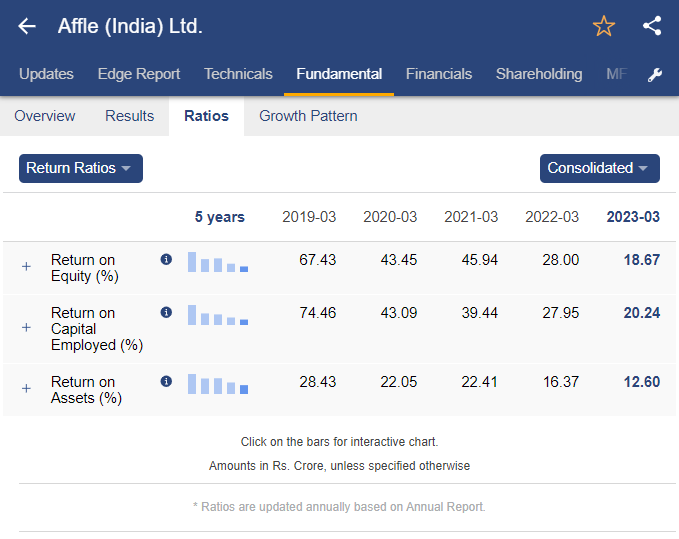20 Excellent Tips For Deciding On AI Stock {Investing|Trading|Prediction|Analysis) Sites
20 Excellent Tips For Deciding On AI Stock {Investing|Trading|Prediction|Analysis) Sites
Blog Article
Top 10 Tips For Assessing Market Coverage Using Ai Stock Predicting Or Analyzing Trading Platforms
Market coverage is among the most important aspects to take into consideration when looking at AI-powered trading platforms. It determines the number of markets and assets can be accessed. With a platform that provides extensive coverage, you are able to diversify your portfolio and avail of opportunities across the globe. Additionally, you can adapt to different trading methods. Here are the top 10 suggestions for assessing the market coverage of these platforms:
1. Evaluate Supported Asset Classes
Stocks: Ensure the platform includes the major exchanges for stocks (e.g., NYSE, NASDAQ, LSE, HKEX) and includes small-cap, mid-cap, and large-cap stocks.
ETFs: Make sure that the platform offers an array of ETFs that offer diversified exposure across different topics, sectors and countries.
Options and Futures: Check whether the platform allows derivatives such as options, futures and other products with leverage.
Commodities and Forex: Determine whether the platform has the forex pair, precious metals, energy commodities, and agricultural products.
Cryptocurrencies Check whether the platform can support popular cryptocurrencies such as Bitcoin, Ethereum, and altcoins.
2. Check the Geographic Coverage
Global markets: Ensure the platform covers all major international markets, such as North America, Europe, Asia-Pacific, and emerging markets.
Regional focus Make sure that the platform has a focus on certain markets or regions that are in line with your interest in trading.
Local exchanges: Check whether the platform supports regional or local exchanges that are relevant to your area or your strategy.
3. Consider comparing real-time data with delayed data Delayed Data
Real-time information is vital for quick decision making, particularly in active trading.
Delayed data: Find out whether you are able to get delayed data for free, or at a discounted cost. This may be enough for long-term investors.
Data latency: Check whether the platform is able to reduce data latency, specifically for high-frequency trading.
4. Examine the historical availability of data
Historical depth: Make sure that the platform can provide comprehensive historical data (e.g. over 10 years worth of data) for backtesting and analysis.
Granularity: Determine whether the historical data include the intraday granularity aswell with weekly, daily and monthly.
Corporate actions - Verify the historical records to make sure it reflects stock splits or dividends, in addition to other corporate activities.
5. Check the market depth and order book data
Platform should provide Level 2 Data (order-book depth) to improve price detection and execution.
Bid-ask spreads: Check if the platform is displaying real-time bid spreads for precise pricing.
Volume data: Make sure that your platform has detailed volume data to analyze market activity and liquidity.
6. Check the coverage of Indices and Sectors
Major indices: Check that the platform supports major indexes (e.g., S&P 500, NASDAQ 100, FTSE 100) for benchmarking and index-based strategies.
Sector-specific data: Determine if your platform is able to provide data specific to certain sectors (e.g. healthcare, technology, energy) so you can perform targeted analysis.
Custom indices. Determine if your platform permits you to create and track custom indexes on the criteria that you define.
7. Assess the Integration of Sentiment and News Data
News feeds: Ensure that the platform has real-time feeds of news from reputable sources, such as Bloomberg and Reuters in the case of market-moving events.
Utilize the tool's sentiment analysis based on information from social media, news or other sources.
Event-driven strategy: Check that the platform supports event driven trading strategies (e.g. announcements of earnings economic reports).
8. Verify Multi Market Trading Capabilities
Cross-market trading : Make sure your platform can handle trading on different markets, asset classes and exchanges via an interface that is single.
Conversion of currencies: Find out if the platform supports multi-currency as well as automatic conversion of currencies for international trading.
Support for time zones: Find out if the platform accommodates trading in different time zones that are used for trading on global markets.
9. Examine the coverage of alternative sources
Alternative data: For more unique insights, verify whether your platform is using other data sources (e.g. satellite imagery web traffic, satellite imagery, or credit card transactions).
ESG Data: Check to see whether there is any data on the environment, social or governance (ESG data) on the platform for socially responsible investing.
Macroeconomic data - Ensure that the platform has macroeconomic data (e.g. GDP, inflation) for fundamental analysis.
Review customer feedback and reputation of the market
User reviews: Examine user reviews to evaluate the platform's market coverage as well as its reliability and usability.
Industry reputation: Check whether the platform has been praised as a market leader by industry experts or has received awards.
Case studies: Check for cases studies, testimonials and other details that highlight the platform's performance on certain assets or markets.
Bonus Tips
Trial period - You can use the free demo or trial to test out the coverage of data and market coverage.
API access - Determine if the API can be used to access data on the market programmatically.
Customer support. Be sure the platform will provide assistance with regard to market or data queries.
The following tips can help you assess the market cover of AI stock-predicting/analyzing trading platforms. You'll be able to choose one that gives you access to data and markets to ensure successful trading. You can broaden your portfolio and make the most of new opportunities using a extensive market coverage. Take a look at the recommended ai stocks tips for website examples including getstocks ai, trading ai, ai trading software, copyright ai trading bot, ai stock picks, ai copyright trading bot, ai invest, best ai etf, ai investment advisor, investment ai and more.
Top 10 Ways To Evaluate The Regulatory Conformity Of Ai Stock Predicting/Analyzing Trading Platform
Regulation compliance is an important aspect to consider when evaluating trading platforms that use AI. Compliance ensures that the operation of a platform is within legal guidelines. Users data is protected and financial regulations are complied with, which reduces any risk of legal problems. Here are 10 best strategies to determine the regulatory compliance on these platforms.
1. Verify registration and licensing
Regulatory Authorities: Ensure that the platform registered with the relevant regulatory organizations (e.g. SEC US, FCA UK and ASIC Australia) and has an authorization.
Verify that brokers who are integrated into the platform are licensed and licensed and.
Public Records: Check out the website of your regulatory body for information on the status of registration as well as past violations and relevant data.
2. Check for Data Privacy Compliance
GDPR: If operating in or serving users in the EU make sure your platform is compliant with the General Data Protection Regulation (GDPR).
CCPA : California Consumer Privacy Act (CCPA) compliance must be checked by users.
Policies for handling data. Examine the platform's privacy policies and ensure that it clearly outlines how data about users is collected, shared, and kept.
3. Examine the Anti-Money Laundering(AML) Measures
AML policies: Make sure that your platform is equipped with robust AML policy to identify and stop any laundering of money.
KYC procedures: Determine that the platform adheres to Know Your Customer (KYC) methods to confirm user identities.
Transaction monitoring: Verify that the platform tracks transactions to detect suspicious behavior and alerts relevant authorities.
4. Make sure you are in compliance with Trading Regulations
Market manipulation: Be sure that the platform has measures in place to stop market manipulation, including fake trading and wash trading.
Types of orders. Examine whether your platform meets the regulations for order types.
Best execution: Make sure the platform follows best execution practices, ensuring trades are executed at the highest price available.
5. Cybersecurity compliance assessment
Data encryption: Ensure that the platform safeguards your data during the transfer process and in rest by encrypting it.
Response to incidents. Verify whether the platform has a plan of action to handle cyberattacks and data breaches.
Certifications: Check if the platform is certified in cybersecurity (e.g., ISO 27001, SOC 2).
6. Transparency and disclosure: A Review
Fee disclosure - Make sure all fees are disclosed, even extra charges or hidden costs.
Risk disclosure: Make sure the platform discloses all risks, especially if you are using high-risk strategies, or trading using leverage.
Performance reporting - Check to determine if there are precise and transparent reports on performance provided by the platform for its AI models.
7. Check the Compliance to International Regulations
Cross-border trading. If you are planning to do international trading, ensure that your platform complies with all applicable regulations.
Tax reporting: Find out if a platform has tools or reports for users to adhere to tax laws.
Sanctions compliance: Make sure the platform complies with international sanctions and is not allowing trading with banned entities or countries.
8. Review Audit Trails and Record-Keeping
Transaction records: Ensure that the platform keeps detailed records of every transaction for the purposes of auditing and regulation.
User activity logs Verify that your platform tracks all activities by users, such as logins, transactions, and account settings changes.
Audit readiness: Check if the platform can provide necessary documentation and logs in the case of a regulatory audit.
9. Make sure you are in compliance with AI-specific Regulations
Algorithmic trading rules: If you are using a platform that supports algorithmic trading, make sure it is compatible with relevant regulatory frameworks like MiFID II or Reg SCI which are in Europe and the U.S.
Fairness and bias: Check whether the platform monitors and corrects biases within its AI models to ensure fair and ethical trading.
Explainability - Make sure that the AI platform is able to give clear and concise explanations regarding AI-driven predictions, decision-making and more. as required by specific rules.
Review User Feedback & Review History of Regulatory History
User reviews: Check out the opinions of other users and then compare it with the platform's conformance to regulatory standards.
History of regulation: Determine if the platform has any records of violations to the law, fines, or penalties.
Third-party Audits: Verify that the platform has been subjected to third-party audits to ensure that it's conforming to all laws and regulations.
Bonus Tips
Consultations with a lawyer: You may need to speak with a lawyer in order to determine if the platform is in compliance with relevant regulations.
Trial period. Try the trial or demo version of the platform to try out its compliance features.
Support for customers: Ensure whether the platform is able to provide support to customers with concerns or questions regarding compliance.
By using these tips you can identify the level of compliance with regulations within AI stock trading platforms. This will allow you to select a platform which is legal and protects your interest. The compliance reduces legal risk and builds trust in the platform. View the most popular get the facts for ai stock picks for website examples including trader ai review, best ai stock, best ai trading software, ai investment app, best ai etf, ai stock prediction, free ai tool for stock market india, stock ai, ai trading software, getstocks ai and more.